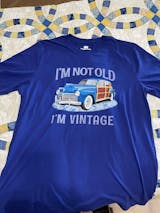Eco-Friendly Rash Guard Materials: What You Need to Know About Sustainable Swimwear Fabrics
Finding a rash guard that protects your skin and the planet can feel like hunting for buried treasure—sunblock in one hand, floatie in the other. Eco-friendly rash guard materials combine high-performance sun protection with recycled or bio-based textiles, so you enjoy every splash without trashing marine life. This guide will define what makes a rash guard eco-friendly, compare recycled and biodegradable fabrics, explain performance standards like UPF 50+, outline key certifications, and show you how to choose and care for sustainable swimwear. Along the way, Bongo Beachwear’s Parrot Head Collection offers a playful yet planet-positive option for your next beach day.
What Are Eco-Friendly Rash Guard Materials and Why Do They Matter?
Eco-friendly rash guard materials are fabrics engineered to reduce environmental harm while delivering the same sun protection and comfort as traditional swimwear. By swapping virgin plastics for recycled or plant-based fibers, these garments help curb landfill waste and lower carbon footprints—benefits that your skin and future grandkids will thank you for.
What Defines a Rash Guard and Its Purpose?
A rash guard is a stretchy, close-fitting top made from synthetic or technical fabrics that shields skin from UV rays, rashes caused by friction, and jellyfish nips. Its purpose is threefold:
- Sun Protection – UPF-rated fabrics block harmful UVA and UVB rays.
- Abrasion Resistance – Smooth fibers reduce chafing on surfboards, boats, or sandy shoulders.
- Thermoregulation – Lightweight materials help wick moisture and maintain comfort.
Understanding these basics sets the stage for choosing a version that safeguards both you and the seashore.
How Do Sustainable Materials Impact Environmental Protection?
Sustainable fabrics close the loop on plastic waste and conserve resources by:
- Repurposing post-consumer plastic bottles into recycled polyester.
- Harvesting discarded fishing nets to create Econyl recycled nylon.
- Cultivating plant fibers that require less water and avoid toxic dyes.
These approaches reduce reliance on fossil fuels, cut greenhouse gas emissions, and prevent microplastic pollution—actions that matter as much as your SPF routine.
What Are the Benefits of Choosing Eco-Friendly Rash Guards?
Switching to a planet-kind rash guard supports ocean health and offers practical perks:
- Durability – Recycled fibers often resist pilling and fading better than virgin synthetics.
- Comfort – Modern bio-based weaves rival conventional stretch blends in softness and flexibility.
- Performance – Fabrics engineered for moisture-wicking and quick-dry speed keep you in the water longer.
Embracing these advantages means every dip doubles as a small act of conservation, leading us to explore which materials make the grade.
Which Recycled Fabrics Are Used in Sustainable Rash Guards?

Recycled fabrics transform waste streams into high-tech swimwear, closing the plastic loop and giving ocean debris a stylish second life.
What Is Recycled Polyester (rPET) and How Is It Made?
Recycled polyester, commonly called rPET, is polyester fiber spun from melted-down post-consumer plastic bottles. This process:
- Collects and cleans plastic waste.
- Shreds bottles into flakes.
- Melts flakes into pellets.
- Extrudes pellets into polyester yarn.
rPET offers UV resistance, quick-dry performance, and a familiar stretch blend, all while diverting plastic from landfills.
How Does Econyl Recycled Nylon Support Ocean Conservation?
Econyl is a brand of recycled nylon made by recovering ghost nets, carpet scraps, and industrial nylon waste. By:
- Retrieving abandoned fishing nets from ocean floors.
- Chemically depolymerizing nylon waste.
- Regenerating purified nylon polymers.
Econyl helps reduce marine debris, lowers energy use by up to 80% compared to virgin nylon, and delivers impressive elasticity for surf-ready rash guards.
Econyl and its Effects on Environment
Research indicates that for every 10,000 tons of ECONYL® raw material produced, approximately 70,000 barrels of crude oil are saved, and 57,100 tons of CO₂ equivalent emissions are avoided. This regenerated nylon significantly reduces the environmental impact of production by up to 80% compared to virgin nylon, contributing to a substantial decrease in global warming impact.
This research supports the article's claims regarding Econyl's environmental benefits, including reduced energy consumption and carbon emissions compared to traditional nylon.
What Is the Environmental Impact of Using Recycled Ocean Plastic?
Recycling one ton of ocean plastic into fabric prevents approximately 1.5 tons of CO₂ emissions and saves around 62,000 liters of water.
| Nutrient | Impact | Evidence |
|---|---|---|
| CO₂ Reduction | ~1.5 tons saved | Life-cycle assessments vs. virgin polyester |
| Water Conservation | ~62,000 liters conserved | Textile production studies |
| Plastic Waste Diverted | 1 ton repurposed | Ocean cleanup reports |
These figures show how recycled ocean plastics make sustainable rash guard swimwear a tangible way to protect marine ecosystems, which brings us to the next frontier: bio-based and biodegradable fabrics.
What Bio-Based and Biodegradable Fabrics Are Available for Rash Guards?

Emerging bio-based materials replace fossil-fuel derivatives with renewable plant or algal fibers that can break down naturally under composting conditions.
Which Plant-Based Fabrics Offer Sun Protection in Rash Guards?
Common plant-derived options include:
- Organic Cotton with UPF Coating – Natural fiber treated to achieve UPF 30+ protection while remaining breathable.
- Corn-Based PLA Blends – Polylactic acid spun from fermented corn sugar yields UV resistance and elasticity.
- Hemp-Cotton Hybrid – Combining hemp’s durability with cotton’s comfort, treated for UPF 25–30.
These fabrics reduce fossil-fuel use and offer end-of-life options like composting, though they may need specialized care to maintain stretch.
What Are the Challenges and Future Trends of Biodegradable Swimwear Fabrics?
Biodegradable swim textiles face hurdles such as limited elasticity recovery, colorfastness issues, and the need for industrial composting. Future innovations target:
- Enhanced Fiber Blends – Integrating elastic bio-polymers to improve stretch retention.
- Green Dye Technologies – Using botanical pigments that resist fading.
- Closed-Loop Manufacturing – Systems that reclaim and remake bio-based fibers on-site.
Overcoming these challenges promises a fully circular swimwear economy, linking innovation to everyday beachwear.
How Do Eco-Friendly Rash Guards Combine Performance with Sustainability?
Planet-friendly fabrics must still meet the demands of surfers, paddlers, and sun worshippers looking for reliable protection and durability.
What Does UPF 50+ Protection Mean for Sustainable Rash Guards?
UPF 50+ indicates fabric blocks at least 98% of UV radiation, shielding skin from sunburn and premature aging.
| Feature | Standard | Benefit |
|---|---|---|
| UPF Rating | 50+ | Blocks ≥98% of UVA/UVB rays |
| Moisture-Wicking | High | Keeps body cool and dry |
| Chlorine Resistance | Enhanced | Maintains elasticity after pool sessions |
These metrics ensure eco-friendly materials deliver uncompromised sun protection, setting the stage for longevity considerations.
How Durable Are Eco-Friendly Rash Guard Fabrics?
Recycled and bio-based fibers undergo rigorous testing for tensile strength, abrasion resistance, and color retention. Their durability often rivals or exceeds virgin synthetics, meaning fewer replacements and less textile waste. Transitioning to sustainable swimwear becomes a win-win: durable performance plus environmental savings.
Performance Properties of Swimwear Fabrics Produced from Polyester and Recycled Polyester Fiber
A study investigating swimwear fabrics made from 100% polyester and a blend of 50% polyester-50% recycled polyester fiber examined their performance properties, including color fastness, abrasion resistance, and seam strength. This research provides insights into how the combination of polyester and recycled polyester fibers affects the quality and performance of swimwear fabrics.
This study directly relates to the article's discussion on the performance and durability of recycled polyester in sustainable rash guards, confirming that recycled fibers are subject to rigorous testing for quality.
What Is PFC-Free Water Repellency and Why Is It Important?
PFC-free finishes use silicone or fluorine-free polymers to shed water, avoiding per- and polyfluoroalkyl chemicals that persist in ecosystems. These treatments maintain quick-dry speed and water resistance without introducing toxic residues, making every splash safer for both you and marine life.
What Certifications and Ethical Practices Ensure Sustainable Rash Guard Quality?
Authenticating eco-claims and fair labor safeguards builds trust, demonstrating that sustainable swimwear meets rigorous social and environmental standards.
What Do Certifications Like Oeko-Tex, GOTS, and Bluesign Mean?
Oeko-Tex Standard 100 certifies textiles free from harmful substances.
Global Organic Textile Standard (GOTS) verifies organic fiber production and social criteria.
Bluesign ensures resource-efficient manufacturing and chemical safety.
These labels guarantee materials and processes meet or exceed industry benchmarks for safety and sustainability.
How Do Fair Labor Practices Influence Sustainable Swimwear Production?
Ethical manufacturing demands living wages, safe working environments, and transparent supply chains. Brands adopting fair labor practices reduce exploitation risks and uplift communities, aligning social responsibility with eco-conscious materials.
What Is Bongo Beachwear’s Commitment to Sustainability?
Bongo Beachwear combines cheeky prints with eco-friendly innovation. Their Parrot Head Collection integrates recycled polyester and Econyl fabrics to deliver vibrant rash guards that protect skin and seas alike. By partnering with certified mills and supporting local artisans, Bongo Beachwear proves that style and sustainability can coexist—check out the Parrot Head Collection for your next ocean escape.
How Can You Choose and Care for Eco-Friendly Rash Guards?
Making the right purchase and extending its lifespan ensures your sustainable swimwear investment pays off, wave after wave.
What Should You Look for When Shopping Sustainable Rash Guards?
When browsing eco-friendly options, prioritize:
- Material Transparency – Look for clear labeling of recycled or bio-based content.
- Certifications – Verify Oeko-Tex, GOTS, or Bluesign logos.
- UPF Rating – Ensure at least UPF 50+ for reliable sun protection.
- Construction Quality – Check flatlock seams and strong stitching for durability.
These criteria help you pick a rash guard that meets performance expectations and eco-standards.
How Do You Properly Care for Recycled and Biodegradable Rash Guard Fabrics?
To maximize lifespan:
- Cold Wash on gentle cycle with mild detergent.
- Air Dry flat or hang away from direct sunlight.
- Avoid Fabric Softeners to preserve water-repellent finishes.
- Store in a dry, shaded spot to prevent mildew.
Following these steps keeps materials performing and reduces laundry-related wear.
What Are Common Questions About Eco-Friendly Rash Guard Materials?
Answering key queries helps you understand sustainable swimwear and select the right piece for your next adventure.
What Are Rash Guards Made Of?
Rash guards are usually crafted from polyester, nylon, or spandex blends. Eco-friendly versions replace virgin synthetics with recycled polyester (rPET), Econyl recycled nylon, or plant-based fibers to minimize environmental impact while providing UV protection and stretch.
Is Recycled Polyester Good for Swimwear?
Yes, recycled polyester offers excellent quick-dry performance, UV resistance, and durability. Its recycled origin diverts plastic bottles from landfills, giving swimwear a lower carbon footprint without sacrificing comfort or fit.
What Is Econyl Fabric and Why Is It Eco-Friendly?
Econyl is regenerated nylon made from ocean-collected fishing nets and industrial waste. It reduces marine debris, cuts energy use by up to 80% versus virgin nylon, and provides the same elasticity and strength ideal for rash guards.
Are There Biodegradable Swimwear Options?
Biodegradable options like PLA (polylactic acid) blends and treated organic cotton exist but often require industrial composting facilities. Ongoing innovations aim to enhance stretch, colorfastness, and home-compostability to broaden their practicality for everyday swimwear.
Riding a wave in sustainable style means choosing materials that respect oceans, maintain performance, and reflect ethical values. By focusing on certified recycled or bio-based fabrics, checking UPF 50+ ratings, and caring for your rash guard properly, you protect both skin and sea for years to come. Ready to suit up? Explore eco-friendly designs that make waves in conservation and fashion—your beach style and our planet will thank you!





0 comments